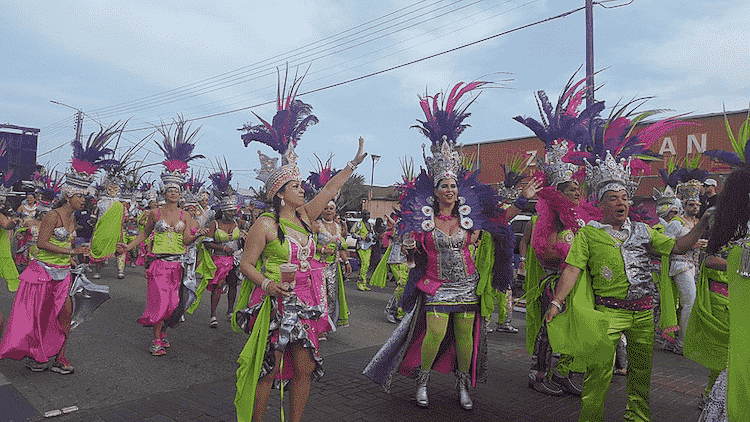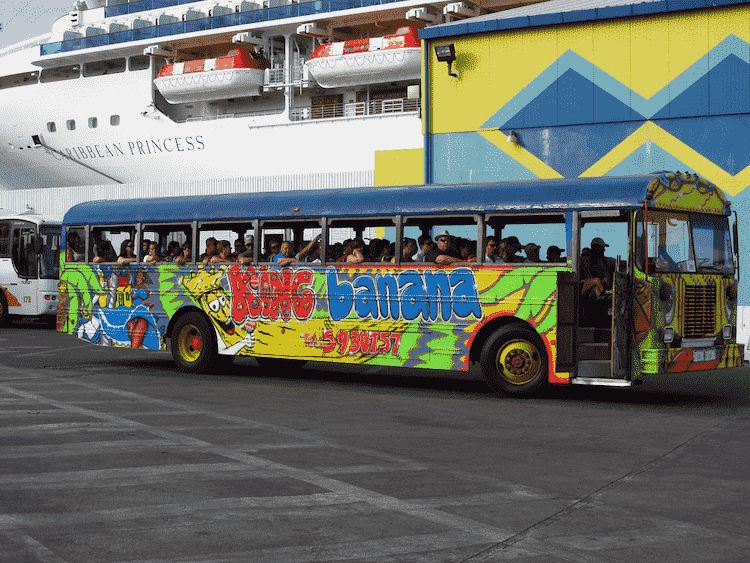What Is Aruba Known For?
With 365 days of summer, long stretches of blonde beaches, and an abundance of outdoor adventures, it’s no wonder that the island of Aruba is a booming tourist destination. Cruise ships and flights full of eager tourists arrive at this South Caribbean island on a daily basis.
Away from the resort strip, you’ll find crystal clear pools for swimming and rocky terrain to explore in all-terrain vehicles or by horseback. Famous landmarks museums and galleries keep culture vultures happy while water sports fanatics stay busy snorkeling and diving to explore an unusual number of shipwrecks.
Before heading to one of the world’s happiest places, enhance your trip with all the wonderful things Aruba is known for.
The Best Beaches

Image courtesy of Erik Cleves Kristensen
You would be hard-pressed to find an island as small as Aruba (roughly the size of Brooklyn, NYC with such a variety of beaches. Many of them have calm waters with a shallow basin for swimming.
The aptly named Baby Beach in the southeast is a favorite with locals and is perfect for inexperienced swimmers. Coral reefs make snorkeling a popular activity, and the island’s trade winds create a setting for kitesurfing and windsurfing.
If you’re looking for seclusion, Arashi Beach near the California Lighthouse fits the bill. On the northwest coast of the island, Palm Beach and Eagle Beach are favorites with an 11-kilometer stretch of soft white uninterrupted sand to Malmok.
For larger waves and stronger currents, surfers can handle the swells on the westward east coast at beaches like Boca Grandi, Bachelor’s Beach, Black Stone Beach, and Dos Playa.
A Rich Culture
Influence from several other countries has enriched Aruba’s culture. The population of Aruba today has residents from Columbia, nearby Venezuela, the Netherlands, and China who have added to the island’s culture with their own.
Although old traditions mix with modern ones, the Arubans have found their own unique culture with festivities like Dera Gay, Betico Day, and the Day of the Flag and Anthem. The island people also celebrate the yearly carnival and many families celebrate festivities associated with the Catholic liturgical year.
Aruba Aloe
Sunny, tropical Aruba is one of the world’s major producers of skin-soothing aloe vera and has been for 125 years and counting. It’s home to the oldest aloe company which still manufactures and sells aloe skin and hair products.
The production of aloe vera is so important to the island’s economy that an image of the plant is included in the Aruba Coat of Arms. And June has been declared as Aloe Wellness Month.
The need for relief from sunburn and the desert-like climate is responsible for the high potency and quality of aloe vera products ranging from toiletries to sunblock and accessory bags. Did you know that you can even buy aloe-infused socks?
Aloe grows well in Aruba’s dry, desert-like climate, and the way it’s harvested has a lot to do with the island’s success with aloe vera products. In order to preserve the plan’s nutrients, the leaves are hand-cut within hours after harvesting.
Aruban People
Along with the Caribbean islands of St. Maarten and Curacoa, Aruba is part of the Kingdom of the Netherlands. Languages spoken include Dutch, English, a little Spanish, and their own language called Papiamento, a type of Creole language.
The official languages are Dutch and Papiamento. In spite of gaining independence from the Netherlands in 1986, the Dutch language is still taught in schools and Arubans retain Dutch citizenship.
Aruba’s slogan of “One Happy Island” isn’t superficial. Unlike many other resort islands around the world, the Aruban people are mostly middle class which controls the cost of living and reduces social inequality. The quality of living is leveled out resulting in lots of happy, smiling people.
High Winds Ametuer World Challange

Around June or July each year, the High-Winds Amateur World Challenge windsurfing tournament draws crowds to Aruba. The tournament has been going on for 30 years. The year-long constant wind speeds of 14-21 mph make it the perfect setting for the tournament. Both professional and amateur windsurfers participate in the competition.
One of the Safest Islands in the Caribbean
Unfortunately for world travelers, many South American countries around the Caribbean islands are not trusted for safe travel. This phenomenon is thought to be caused by the legacy of colonialism and an economy dependent on tourism. Adding into the mix is the fact that many of these places have substandard infrastructure.
But these problems don’t plague Aruba. The island ranks consistently year after year as one of the Caribbean’s safest destinations with low rates for both petty and violent crimes. Arubans are proud of the fact that the island carries a level 1 precaution for travelers by the US State Department meaning to exercise normal precautions.
When you compare this to Brazil with a level 2 warning (exercise increased caution), Honduras and Haiti at level 3 (reconsider travel), and Afghanistan at level 4 (do not travel) you should feel good about traveling to Aruba. Exercising normal precautions should be the case anywhere. Use common sense and guard your valuables.
Drinking Water
Unsafe drinking water is another problem you may encounter when traveling to a tropical destination. But you can safely drink down plenty of H2O in Aruba. This Caribbean island has some of the world’s safest and cleanest drinking water straight from the tap. This is pretty amazing for a place that has no source of fresh water and gets in from a saltwater desalinization plant.
Aruba has had success with this method since 1932, so no worries about the drinking water making you sick. Leave the water purifying pills and the bottled water behind and opt for a refillable water bottle. Fill the bottle from the tap in your hotel and help Aruba cut down on single-use plastic.
Aruba Carnival

Image courtesy of Wikimedia
The pre-lenten festival Carnival is celebrated in many countries around the world. In Aruba, the festival began as a series of smaller festivals in 1954 and grew into an energetic month-long celebration of street parties, parades, pageants, and music competitions.
The celebrations unite and delight everyone on the island. The locals look forward to the festivities all year long as the streets will be filled with catchy calypso tunes, fancy costumes, and elaborate floats.
The history of Carnival in Aruba can be traced back to a pre-lenten celebration held at the island’s oldest private social club, the Tivola Club in Oranjestad in February of 1944. By 1955, several clubs and districts came together to celebrate the first Aruba Carnival with the first official Carnival queen.
And in 1957, the traditional Grand Parades were organized. Today, Carnival activities to enjoy in Aruba include Children’s Parades, the Grand Carnival Parade in San Nicolas, Jouvert Morning Pajama Party, and the finale—the Grand Carnival Parade in Oranjestad.
The Food
Aruba’s cuisine has a distinctive blend of cultural influences from South America, Spain, Portugal, and Holland. Seafood is popular of course, and many travelers are happy to stick with it the whole time.
Some dishes authentic to the island to try to include pisca den foil which is mahi mahi cooked in foil, keri keri (sauteed shark or barracuda,)and a conch stew called calco stoba. Most traditional meals are served with a side of pan bati (savory pancakes) and funchi (cornmeal mush).
Some of the best places to try authentic Aruban food are the Gasparito Restaurant and Art Gallery which serves delicious seafood and cheese stuffed casserole called keshi yena and The Old Counuchu House featuring a goat stew called cabrito stoba. If you visit the island in October, you can’t miss the annual Eat Local Food Festival.
Since Aruban getaways are popular with New Englanders during the winter months, popular American chain restaurants are plentiful.
Great Weather
With an average daily temperature of 82 degrees F and mostly sunny skies, summer chasers from the world flock to Aruba all year long. The island is also below the hurricane belt and usually escapes direct hits. The climate is arid and desert-like which is why cacti are scattered across the landscape.
Although it can get quite hot during the day, you can count on Aruba’s famous trade winds to cool things off. The rainy season is October to January, The rains tend to be short bursts with the rainfall returning soon after.
Easy Travel

Image courtesy of Jasperdo
Getting to and around Aruba is as easy as a Caribbean breeze. No pre-arranged Visa is needed for most travelers including those from the US, Canada, EU members, China, and most of the island’s neighboring countries. Once there, your visa will be stamped at the immigration office and will be valid for 30 days. If you want to extend your stay, you can opt to stay up to 180 delightful days.
Aruba has an excellent major bus line that travels between all of the main beaches. Since all taxis are government regulated, you won’t find any rideshare companies such as Uber. But taxis are easy to flag down in popular tourist areas.
To explore the island off the resort strip, renting a car is highly recommended. Arubans drive on the same side of the road as Americans. However, some of the rules of the road may be different such as no turning right on a red light. So brush up on the traffic rules before your trip.
If you plan on visiting places like the Arikok National Park, it’s advisable to rent a jeep or 4 wheel-drive vehicle since the terrain can get rough.
Walking around Aruba is also a breeze, and you’ll see lots of tourists strolling along the beaches. The entire length of Palm Beach can be walked in about 20 minutes.
Cruise Friendly
Aruba is a cruise-friendly little island, and the cruise industry is important to the economy. Cruisers are greeted in the quaint capital city of Oranjestad, a charming cruise ship port featuring pastel-hued Dutch colonial architecture with a Spanish and Caribbean twist.
The tidy streets of Oranjestad are lined with restaurants, shops, galleries, museums, and entertainment options. Be sure to visit the Butterfly Farm of the Aruba Aloe Museum. It’s a wonderful city to experience the culture and atmosphere of Aruba.
Arikok National Park

Image courtesy of alljengi
If you love nature and outdoor adventures, a trip to Arikok National Park is a must while visiting Aruba. Located on the rocky shores of the island’s north coast, the park covers about 20 percent of the island and features a landscape covered with various cacti, sand dunes, caves, and unique rock formations.
Known as Ayó, some of the large boulders feature Indian paintings. Some of the creatures you may spot in the park include iguanas, parakeets, goats, lizards, and snakes.
Weathered Casibari Boulders are scattered across the dry scrub. Trails and natural steps lead you through the rocks where you’ll have some great photo ops. Be on the lookout for the remnants of Natural Bridge at Anicouri.
Carved by wave erosion, the bridge collapsed in 2005, but there’s a natural bridge here. On the waterfront, you’ll find the remains of a gold smelter from the 19th century.
Fort Zoutman & King Willem III Tower
Amid all the tropical fun, it’s easy to forget, but little Aruba has a large history to explore. Don’t skip a visit to Fort Zoutman, the island’s oldest structure. Built by the Dutch Army in 1798, it’s now home to the Historical Museum of Aruba which you can visit at the same time.
The museum is housed in the King Willem III Tower which features artifacts that chronicle the history of the island. The tower was originally built as a lighthouse and lookout for pirates.
Along the waterfront, you’ll find pristine Wilhelmina Park, one of the island’s most prominent historical attractions. The park is especially picturesque when the flowering plants are in bloom in June or September and October. You may even spot iguanas along the edge of the water.
Cosecha Aruba
Don’t leave Aruba without a few authentic local arts and crafts items from Cosecha. All of the handicrafts made on the island have a SEYO Seal of Authentication ensuring that the product was hand-made on the island. Products include jewelry, paintings, household accessories, and handbags.
Support the local trade and take home some great souvenirs. The island has two shops, one in San Nicolas and one in Oranjestad.
About the Author Anna Timbrook
Anna is the co-owner of expert world travel and can't wait to share her travel experience with the world. With over 54 countries under her belt she has a lot to write about! Including those insane encounters with black bears in Canada.

